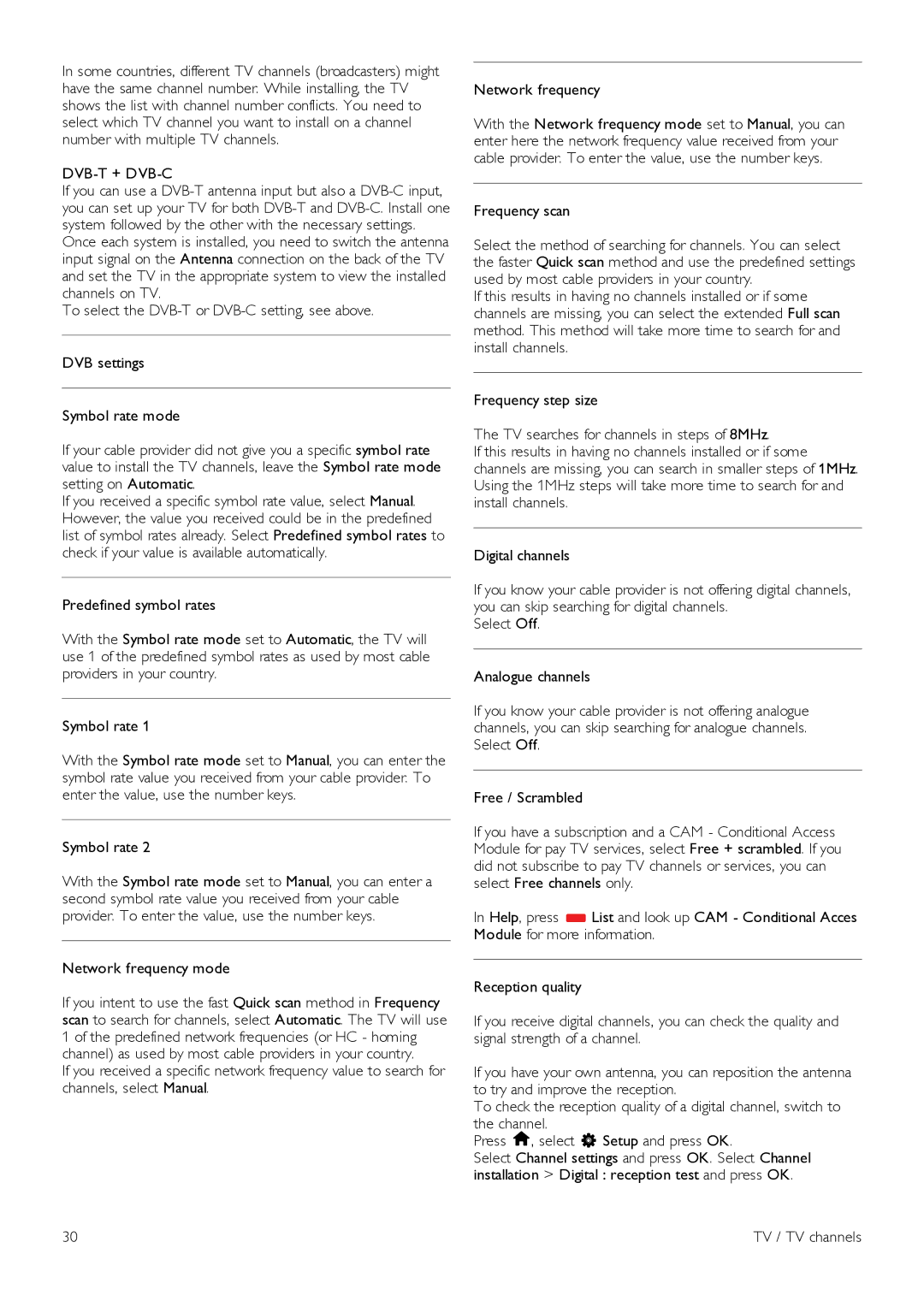
In some countries, different TV channels (broadcasters) might have the same channel number. While installing, the TV shows the list with channel number conflicts. You need to select which TV channel you want to install on a channel number with multiple TV channels.
DVB-T + DVB-C
If you can use a
To select the
DVB settings
Symbol rate mode
If your cable provider did not give you a specific symbol rate value to install the TV channels, leave the Symbol rate mode setting on Automatic.
If you received a specific symbol rate value, select Manual. However, the value you received could be in the predefined list of symbol rates already. Select Predefined symbol rates to check if your value is available automatically.
Predefined symbol rates
With the Symbol rate mode set to Automatic, the TV will use 1 of the predefined symbol rates as used by most cable providers in your country.
Symbol rate 1
With the Symbol rate mode set to Manual, you can enter the symbol rate value you received from your cable provider. To enter the value, use the number keys.
Symbol rate 2
With the Symbol rate mode set to Manual, you can enter a second symbol rate value you received from your cable provider. To enter the value, use the number keys.
Network frequency mode
If you intent to use the fast Quick scan method in Frequency scan to search for channels, select Automatic. The TV will use 1 of the predefined network frequencies (or HC - homing channel) as used by most cable providers in your country.
If you received a specific network frequency value to search for channels, select Manual.
Network frequency
With the Network frequency mode set to Manual, you can enter here the network frequency value received from your cable provider. To enter the value, use the number keys.
Frequency scan
Select the method of searching for channels. You can select the faster Quick scan method and use the predefined settings used by most cable providers in your country.
If this results in having no channels installed or if some channels are missing, you can select the extended Full scan method. This method will take more time to search for and install channels.
Frequency step size
The TV searches for channels in steps of 8MHz.
If this results in having no channels installed or if some channels are missing, you can search in smaller steps of 1MHz. Using the 1MHz steps will take more time to search for and install channels.
Digital channels
If you know your cable provider is not offering digital channels, you can skip searching for digital channels.
Select Off.
Analogue channels
If you know your cable provider is not offering analogue channels, you can skip searching for analogue channels. Select Off.
Free / Scrambled
If you have a subscription and a CAM - Conditional Access Module for pay TV services, select Free + scrambled. If you did not subscribe to pay TV channels or services, you can select Free channels only.
In Help, press *List and look up CAM - Conditional Acces Module for more information.
Reception quality
If you receive digital channels, you can check the quality and signal strength of a channel.
If you have your own antenna, you can reposition the antenna to try and improve the reception.
To check the reception quality of a digital channel, switch to the channel.
Press h, select S Setup and press OK.
Select Channel settings and press OK. Select Channel installation > Digital : reception test and press OK.
30 | TV / TV channels |
